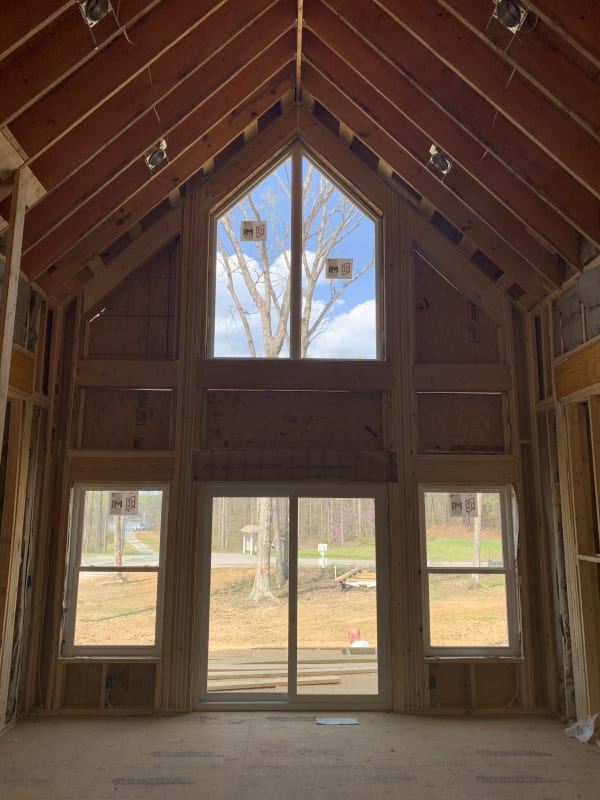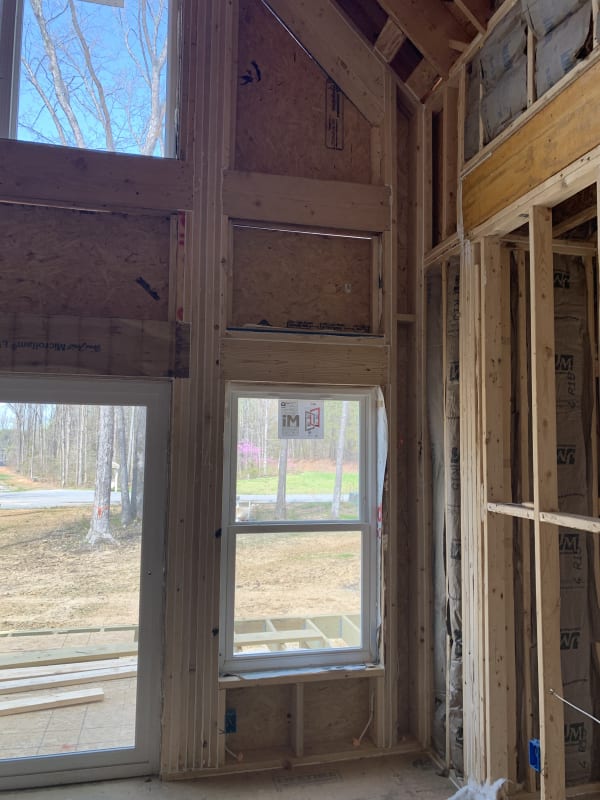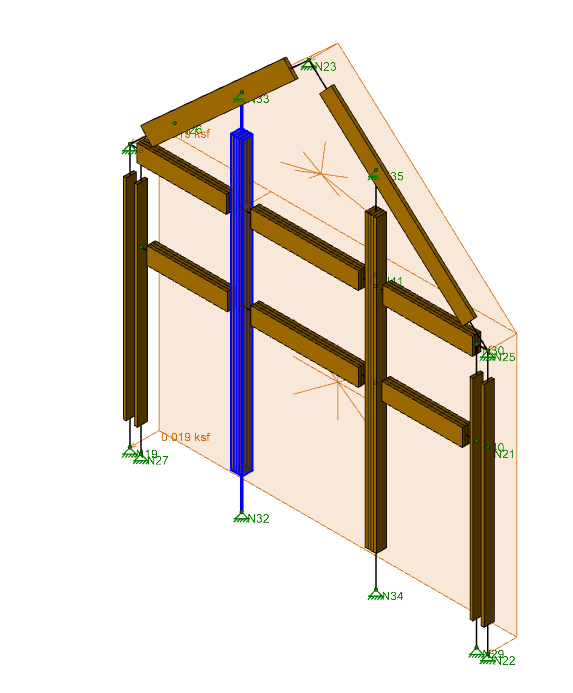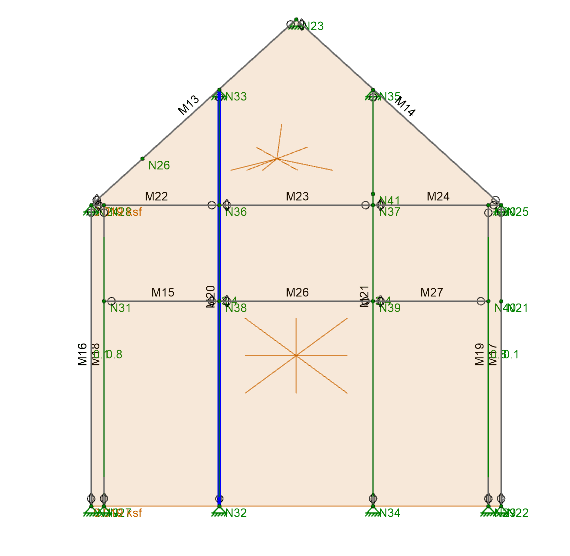Morning all,
I'm looking for a bit of input on a tall wall analysis. We've got a Client that has come asking for help after building a wall beyond the limits of the code AND taller than the plans reflected. They raised the wall 2' and basically crossed their fingers hoping that the inspector wouldn't notice, no dice. So they're looking to us to hopefully find a way to solve the problem. I've modeled it in RISA 3d and I'm getting a midspan deflection of around 1.3", the wall is a gable/cathedral ceiling type and the peak is 19' high, 16' wide at the base. I'm only considering wind load at this point (i'll add in snow eventually). The wall is 2x6 with 4- 2x6 on each side of the largest window and then a couple 2-6's near the edge on both sides.
So, seeing as deflection is too high, but strength is ok (at least for just wind), how would you go about trying to modify this wall to bring down deflection? My boss had an idea about nailing a 2x8 flatwise (full length) to the back of the 4-2x6's to increase the moment of inertia and thus decrease deflection. I was just curious about how other engineers might approach this problem.
Thanks!




I'm looking for a bit of input on a tall wall analysis. We've got a Client that has come asking for help after building a wall beyond the limits of the code AND taller than the plans reflected. They raised the wall 2' and basically crossed their fingers hoping that the inspector wouldn't notice, no dice. So they're looking to us to hopefully find a way to solve the problem. I've modeled it in RISA 3d and I'm getting a midspan deflection of around 1.3", the wall is a gable/cathedral ceiling type and the peak is 19' high, 16' wide at the base. I'm only considering wind load at this point (i'll add in snow eventually). The wall is 2x6 with 4- 2x6 on each side of the largest window and then a couple 2-6's near the edge on both sides.
So, seeing as deflection is too high, but strength is ok (at least for just wind), how would you go about trying to modify this wall to bring down deflection? My boss had an idea about nailing a 2x8 flatwise (full length) to the back of the 4-2x6's to increase the moment of inertia and thus decrease deflection. I was just curious about how other engineers might approach this problem.
Thanks!





![[2thumbsup] [2thumbsup] [2thumbsup]](/data/assets/smilies/2thumbsup.gif)